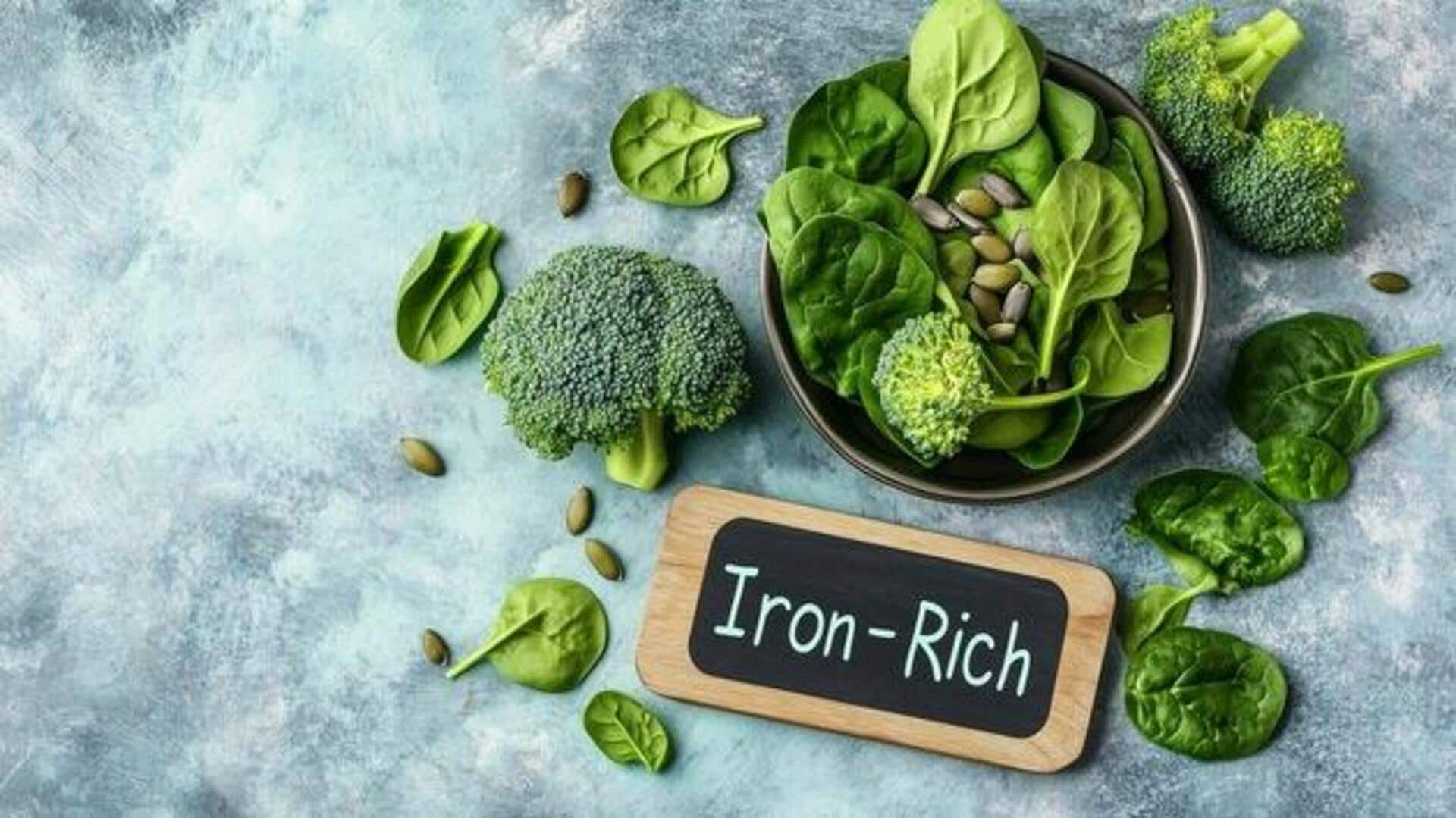
Truth about iron-rich foods: Myth v/s facts
What's the story
Iron is an important nutrient, especially for vegetarians. However, there are a few myths about iron-rich foods in vegetarian diets that often make things confusing and spread misinformation. Knowing these myths can help you make informed dietary choices to meet your iron requirements. Here, we debunk some common misconceptions about iron sources in vegetarian diets and clarify how vegetarians can maintain healthy iron levels.
Spinach myth
Myth: Spinach is the best iron source
Spinach is often touted as an excellent source of iron, but the leaves contain oxalates that inhibit iron absorption. While spinach does contain iron, the presence of oxalates means that only a small portion of this iron is bioavailable. However, to improve absorption from spinach, pair it with vitamin C-rich foods like bell peppers or citrus fruits.
Animal products myth
Myth: Only animal products provide enough iron
A common misconception is that only animal products provide sufficient dietary iron. Plant-based sources like lentils, chickpeas, tofu, and fortified cereals are rich in non-heme iron. Although non-heme iron is less readily absorbed than heme iron found in animal products, consuming vitamin C alongside these foods can enhance absorption significantly.
Whole grains myth
Myth: All whole grains are poor iron sources
Whole grains are frequently disregarded as bad sources of dietary iron because of their phytate content, which can prevent absorption. However, several whole grains (like quinoa and oats) are rich in non-heme iron. Soaking or fermenting the grains prior to consumption can lower phytate levels and enhance the bioavailability of their nutrients.
Beverage impact myth
Myth: Tea and coffee do not affect iron absorption
Many believe drinks like tea and coffee don't affect nutrient absorption, but they contain polyphenols, which can prevent the body from absorbing non-heme iron from plant-based foods. To reduce this effect, refrain from having tea or coffee with meals rich in plant-based irons, like legumes or leafy greens.
Food pairing tip
Tip: Combine foods for better absorption
Enhancing the body's capacity to absorb non-heme iron from plant-based sources can significantly improve by strategic food pairing. Incorporating vitamin C-rich fruits with meals that include beans or lentils is a powerful strategy. This combination works by converting ferric iron into a more soluble ferrous form within the digestive tract, thereby boosting absorption rates considerably. It ensures that vegetarians can meet their iron requirements effectively.